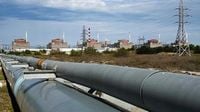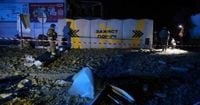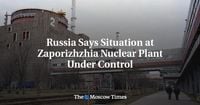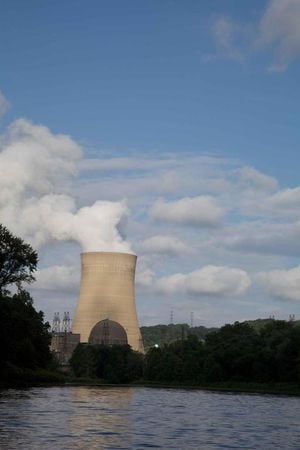For more than a week, the Zaporizhzhia Nuclear Power Plant—Europe’s largest—has been cut off from external electricity, marking its longest outage since Russia’s full-scale invasion of Ukraine began in February 2022. The plant, located in southern Ukraine and under Russian occupation since the early days of the war, now sits at the heart of a deepening nuclear safety crisis, with world leaders and nuclear experts warning that the situation could quickly spiral into catastrophe if urgent action is not taken.
Since September 23, 2025, the facility has relied solely on emergency diesel generators to keep its six inactive reactors and spent fuel cool. According to the Associated Press, these backup systems, while currently holding up, were never intended to operate for such an extended period. Ukrainian President Volodymyr Zelenskyy has repeatedly sounded the alarm, describing the situation as “critical” and emphasizing, “The generators and the plant were not designed for this.”
The International Atomic Energy Agency (IAEA), the United Nations’ nuclear watchdog, has echoed these concerns. Director-General Rafael Mariano Grossi stated, “It is clearly not a sustainable situation in terms of nuclear safety.” He added, “The current status of the reactor units and spent fuel is stable as long as the emergency diesel generators are able to provide sufficient power to maintain essential safety-related functions and cooling.” But, as Grossi warned, the margin for error is razor-thin: “It is extremely important that off-site power is restored.”
Staff at Zaporizhzhia are rotating eight diesel generators to maintain a steady supply, with nine more on standby and three under maintenance, according to the IAEA. These efforts are supported by fuel reserves expected to last more than 10 days, provided regular resupply continues. Still, as Dmytro Gumeniuk, a senior official at Ukraine’s State Scientific and Technical Center for Nuclear and Radiation Safety, told The Associated Press, “Even if they are refueled, this is still not a typical situation. Generators can fail, and they must be constantly monitored. We’ve never had a case like this before.”
The crisis was triggered when military activity damaged the plant’s last remaining power line about 1.5 kilometers from the site, blocking access for repairs. As fighting rages on in the region, both Ukrainian and Russian officials have traded blame for the outage. President Zelenskyy accused Russian artillery of targeting the infrastructure, stating that Russian shelling has prevented crews from restoring the crucial external power line needed to cool the reactors. Meanwhile, Kremlin spokesman Dmitry Peskov dismissed the accusation, claiming, “It is stupid to accuse the Russian side of shelling the plant it controls,” and instead blamed Ukrainian shelling.
Regardless of who is at fault, the consequences of prolonged reliance on emergency generators are stark. While the reactors at Zaporizhzhia have been in cold shutdown for more than three years—meaning fission reactions have stopped and temperatures and pressures are declining—continuous cooling remains essential. If the diesel generators were to fail, the spent nuclear fuel could overheat, potentially leading to a meltdown. As Gumeniuk warned, “There is still a threat that if the system cooling the nuclear fuel is lost, an accident could happen. It is difficult to say what the result would be in the event of such an accident—the scale depends on how many units are affected.”
The haunting legacy of Chernobyl, the world’s worst nuclear disaster, looms large in Ukraine. In 1986, a reactor explosion and fire at the Chernobyl plant near Kyiv released massive amounts of radiation, causing incalculable environmental and human harm. While Zaporizhzhia’s reactors are currently shut down, the risk of a similar disaster cannot be discounted if cooling systems fail.
Grossi and the IAEA have been in continuous contact with both Ukrainian and Russian authorities, urging swift action to reconnect the plant to the electricity grid. “I am in constant contact with the two sides with the aim to enable the plant’s swift reconnection to the electricity grid,” Grossi said, stressing that “neither side would benefit from a nuclear accident.” The IAEA has also stationed permanent monitors at Zaporizhzhia and Ukraine’s three other nuclear power plants, aiming to maintain oversight and provide timely warnings about potential threats.
The Zaporizhzhia plant has lost external power ten times since the war began, each incident underscoring the perilous intersection of military conflict and nuclear technology. The current outage is the longest and most concerning to date. According to The Guardian, the situation has grown even more precarious in recent days, with at least one generator reportedly failing and ongoing fighting making it impossible for repair crews to access damaged lines.
The broader geopolitical context adds another layer of urgency. As the crisis at Zaporizhzhia unfolds, European leaders have grown increasingly concerned about Russian military activity, including the violation of airspace by unidentified drones and warplanes. On October 1, 2025, leaders from across Europe gathered in Denmark for security and defense summits, prompted in part by recent drone sightings over Danish airports and military sites. The Danish Defense Ministry reported multiple drone incursions, leading to temporary airport closures and heightened NATO vigilance in the Baltic Sea region. While there was no immediate evidence that these drones posed a direct threat, the incidents have amplified fears of escalation and underscored the fragility of regional security.
Inside Ukraine, Zaporizhzhia is only one of four nuclear plants, but it is the only one under Russian control. Russia declared the plant annexed in September 2022, alongside Donetsk, Kherson, and Luhansk, following referendums that were widely dismissed by the international community. Despite Russia’s claims, fighting continues in all four regions, and Moscow has not secured full control.
As the standoff drags on, international nuclear safety experts are urging immediate de-escalation and coordinated action to prevent disaster. Zelenskyy, in a stark warning, stated, “No terrorist in the world has ever dared to do with a nuclear power plant what Russia is doing now. And it is right that the world not remain silent.”
With the world watching and the clock ticking on fuel supplies, the fate of Zaporizhzhia remains uncertain. The plant’s staff, supported by international monitors, continue to work under extraordinary pressure, their efforts the last bulwark against a potential nuclear catastrophe. The coming days will test the resolve of all parties involved—and the resilience of the systems designed to keep Europe safe from its nuclear past.






